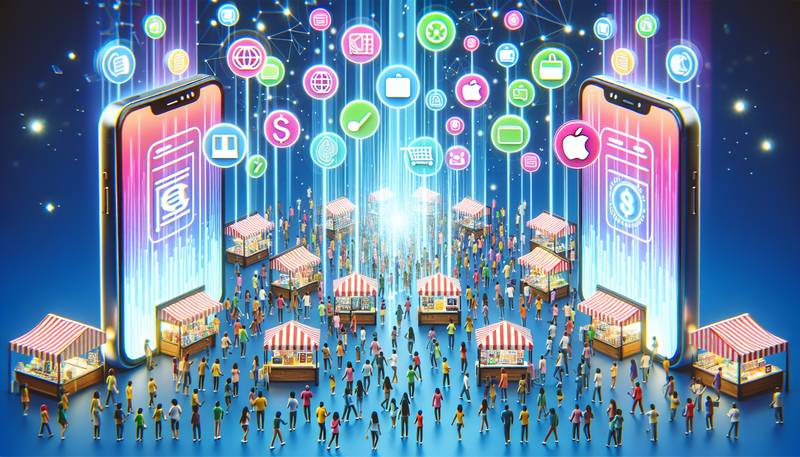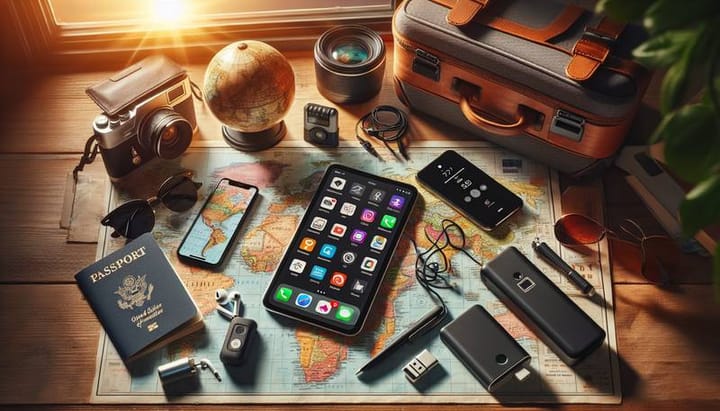Guide to Mobile Payments: Apple Pay, Google Wallet, and More

Imagine a world where your bulky wallet becomes a relic of the past, and all you need to make a purchase is the smartphone in your hand. Well, that world is no longer just a figment of the imagination — it's here, and it's powered by mobile payments. From the checkout line to your favorite online retailer, mobile payments offer a level of convenience that traditional methods can't match. In this comprehensive guide, we'll introduce you to the wonders of mobile payments, focusing on popular options like Apple Pay and Google Wallet. So, if you've ever found yourself curious about leaving your leather wallet behind and stepping into the digital age, you're in the right place. Let's dive into the future of financial transactions, where safety intersects with simplicity.
The Basics of Mobile Payments
At its core, a mobile payment is a transaction made using a mobile device. By linking your credit or debit card to a mobile payment app, your phone becomes a digital wallet, ready to complete purchases at a moment's notice. Whether through near-field communication (NFC) technology, QR codes, or online payment gateways, mobile payments simplify the process without sacrificing security. But how do you get started with this seemingly futuristic method of spending? Let's peel back the layers and guide you step by step.
Setting Up Your Mobile Wallet
If you're like most people, your smartphone is an indispensable part of your daily life. But did you know it can also be your primary way to pay? To get started, you'll need to select a mobile payment app compatible with your device. If you're an Apple enthusiast, Apple Pay will be your go-to. Android users might gravitate towards Google Wallet, and those looking for a universal option might consider PayPal or Venmo. Once you've chosen your app, it's time to connect your bank cards. Typically, you'll be prompted to take a picture of your card within the app, which will then securely store your details for future use. Just follow the in-app instructions to verify the cards, and voilà! You’re ready to make your first mobile payment.
Security and Privacy Concerns
When it comes to finances, security is never too far from one's mind. Thankfully, mobile payments are built with state-of-the-art security features that often surpass the safety measures of traditional cards. For example, when you add a card to a mobile wallet, the actual card numbers are not stored on your device; instead, a unique token is generated for transactions, keeping your details under wraps. Additionally, biometric authentication – like a fingerprint or facial recognition – adds an extra layer of protection. On top of these features, most mobile payment platforms follow strict compliance with industry security standards such as PCI DSS. In other words, rest assured that mobile payments are designed with your privacy and safety front and center.
Apple Pay
Apple Pay has emerged as a frontrunner in the mobile payments space, and it's not hard to see why. It's integrated into every iPhone, making it instantly accessible to millions of users worldwide. Apple has meticulously designed its payment system to be both user-friendly and secure. That means you can enjoy the ease of touchless payments while trusting that your financial data is protected by Apple's sophisticated security systems. Not to mention, Apple Pay is accepted at over 85% of retailers in the U.S., making it one of the most widely accepted mobile payment options available. And for those who love rewards and cashback, Apple Pay doesn't disappoint, often offering special bonuses when used with certain credit cards.
How to Use Apple Pay
Using Apple Pay is as simple as it gets. Just double-click the side button on your iPhone, glance at your phone for Face ID or place your finger on the Touch ID sensor, and hold the top of your phone near the contactless reader until you see the checkmark and feel a subtle vibration. That's it — transaction complete. What's more, Apple Pay isn't just for in-person transactions; you can use it in apps or on the web in Safari where you see the Apple Pay logo. With your billing, shipping, and contact information filled out automatically, online shopping has never felt so effortless. Plus, with the rise in contactless delivery, Apple Pay makes for the perfect cash-free and safe payment method.
Google Wallet
Google Wallet gives users with Android devices an equally robust option for mobile payments. With a user-friendly interface and seamless integration with other Google services, it's a very convenient choice for millions around the globe. Google Wallet also uses a virtual account number, ensuring your card details are never shared with the merchant. This means every time you tap to pay, a one-time unique code is used, so your actual card number is never revealed—adding an extra layer of security. Plus, if you ever lose your device, you can simply use the "Find My Device" feature to instantly lock your device from anywhere, secure it with a new password, or wipe it clean of personal data.
How to Use Google Wallet
Getting started with Google Wallet is a breeze. If you have a Google account (and at this point, who doesn't?), you're already halfway there. Just download the Google Wallet app, sign in with your Google account, and add your cards by snapping a picture of them or entering the card information manually. When it's time to pay at a store, wake your phone, hold it near the terminal until you see a checkmark, and you're good to go! For online payments, look for the Google Wallet symbol at checkout, choose the card you want to use, and complete the purchase with no need for lengthy card numbers or verification codes. With Google Wallet, your checkout process online and offline is fast, secure, and as easy as clicking a button.
Other Mobile Payment Options
Though Apple Pay and Google Wallet are the giants in the mobile payment industry, they're not the only options available. Samsung Pay, for instance, not only allows similar functionality to its competitors but also works with older magnetic stripe terminals, giving it a broader range. Then there are apps like PayPal and Venmo, which are incredibly popular for online payments and peer-to-peer money transfers. PayPal even allows for seamless payments across a variety of currencies—perfect for international travelers or online shoppers. Venmo's social aspect, where you can share and like payment descriptions, adds a fun twist to sending money. Each platform offers unique features, deals, and partner discounts, so it's worth exploring to find which suits your needs best.
Conclusion
The world of mobile payments is vast and varied, and it's only getting bigger. Whether you're reaching for your iPhone with Apple Pay, tapping your Android phone with Google Wallet, or sending money to a friend with PayPal or Venmo, mobile payments offer a blend of convenience, security, and speed that traditional methods can't match. As we embrace a more digital lifestyle, it's clear that mobile payments are not just a trend but a mainstay for modern finance. So go ahead, give it a try, and join the growing number of people who've discovered that their phone can be the only thing they need to shop, dine, travel, and more. With this comprehensive guide, we hope you feel more comfortable and informed about stepping into the future of payments. Here's to making your next purchase with just a touch, a click, or a tap!


